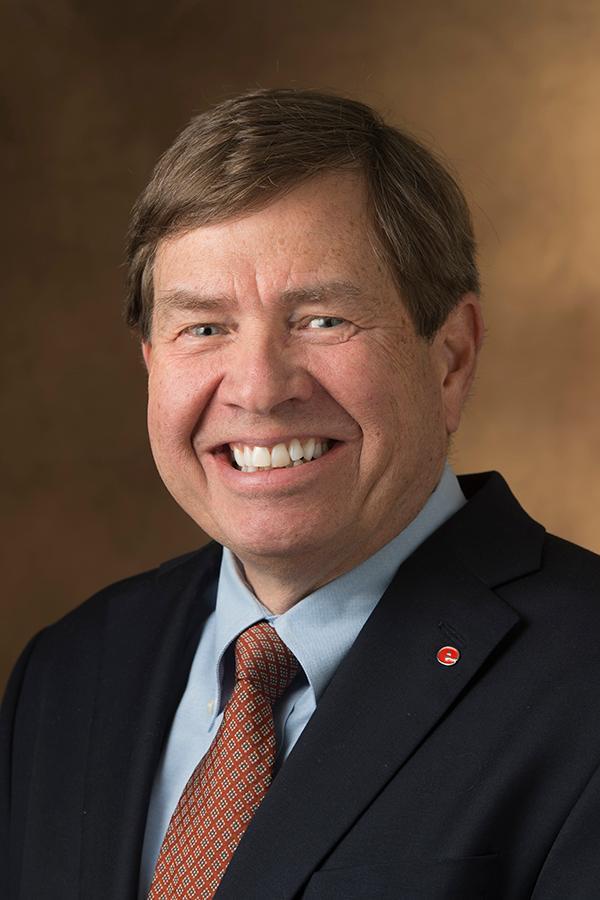 The emphasis of this year’s presidential election on personalities over issues and the anger, distrust and frustration of voters are all signs that we are in an early stage of a voter realignment, one of those rare events in American history where there is a massive reshuffling of the voter coalitions that make up the political parties.
The emphasis of this year’s presidential election on personalities over issues and the anger, distrust and frustration of voters are all signs that we are in an early stage of a voter realignment, one of those rare events in American history where there is a massive reshuffling of the voter coalitions that make up the political parties.
Get The Latest News!
Don't miss our top stories and need-to-know news everyday in your inbox.
Changes in the economy and in our population are reasons for the realignment, but I want to explore a little more why and how those events have triggered this monumental change.
First, let’s be clear: Not all economic depressions cause voter realignments. While the depressions of 1894 and 1929 contributed to voter realignments, the depressions of 1836, 1857 and 1873 had no lasting impact on political parties and voters.
So, what’s different? Why some depressions contribute to a realignment and others do not has to do with who is impacted by the economic downturn and what other factors are also affecting the voters at the time.
The Great Recession of 2008 was unique because it coincided with a profound change in our population. The combination of these events have frightened voters. The world we all knew and understood changed, and changed rapidly and dramatically.
The resulting uncertainty about our economic and social status in this new world has shaped our realignment and given rise to non-traditional presidential candidates such as Donald Trump and Bernie Sanders.
In 2010, the U.S. Census informed us that over the past 20 years, America has gotten older, more Hispanic and Asian, and less wedded to marriage and traditional family structures.
According to the Census, 2010 marked a major turning point in the nation’s social, cultural, geographic, racial and ethnic fabric. The population shift is so profound that the Census Bureau predicted that it would shape elections, how we think and how we live for the next generation.
For example, black-white racial dynamics will change as Hispanics and Asians become major forces in the population. Most significantly, whites will no longer be the majority racial/ethnic group in another 20 years.
Along with becoming more diverse, the U.S. is seeing more people living in multi-generation households, fewer children and other changes to traditional gender roles, including fewer marriages, more women receiving college diplomas, and a delay in childbirth.
All of these changes mean that the world in which we lived in the 1990s no longer exists. For many people, especially older whites, these changes are hard to understand, and in some cases, harder to accept as values, privileges, customs and wealth begin to change, too.
The Great Recession of 2008 made the tensions caused by the changes in the population volatile and toxic. The simultaneous blows to employment, housing and the stock market left the American middle class devastated.
In one survey, 70 percent of households experienced a reduction in income and 40 percent experienced significant financial distress, which was defined as loss of jobs, savings and/or home ownership.
The combination of population changes along with the economic collapse of 2008 triggered our current voter realignment. A major part of that realignment is fueled by the anxiety and frustration felt by the large number of people who lost the most in the economic crisis and who, at the same time, feel threatened by the population changes.
These voters are people who have lost confidence and who are generally pessimistic about the future. They are the 57 percent of Americans who say that things are going badly in the U.S. They feel that social values about gender, family and marriage are adrift. They are the people who have lost buying power and who have lost economic security. In other words, these people feel that they have lost social, political and economic status in American society.
Donald Trump speaks to many of these voters. His impatience with quibbling politicians, his emphatic and passionate declarations, and his confident anti-establishment demand for change have attracted many older, white male voters anxious about their place in America.
Bernie Sanders tapped into the same anxiety about social and economic status. His appeal, however, was to a younger, also predominantly white but more gender and racially diverse group of voters. Hillary Clinton is late in appealing to these voters, but she still hopes to win over Sanders supporters by speaking about income inequality.
Whether we are “Stronger Together” or will “Make America Great Again,” each campaign is trying to address the anxiety of Americans. At this moment, it appears that Trump’s campaign speaks more directly to the fears and frustrations of those voters who are most anxious about their place in American society than does Clinton’s. But, regardless of which campaign strategy proves to be the most effective, each recognizes the anxiety Americans face about their economic and social status.
Stephen Hansen is a retired dean and professor of American History at Southern Illinois University Edwardsville, where he also served as the Interim Chancellor.
The views and opinions expressed in this article are those of the authors and do not necessarily reflect the views and opinions of RiverBender.com/EdGlenToday.com.
Opinions expressed in this section are solely those of the individual authors and do not represent the views of RiverBender.com or its affiliates. We provide a platform for community voices, but the responsibility for opinions rests with their authors.
More like this:
